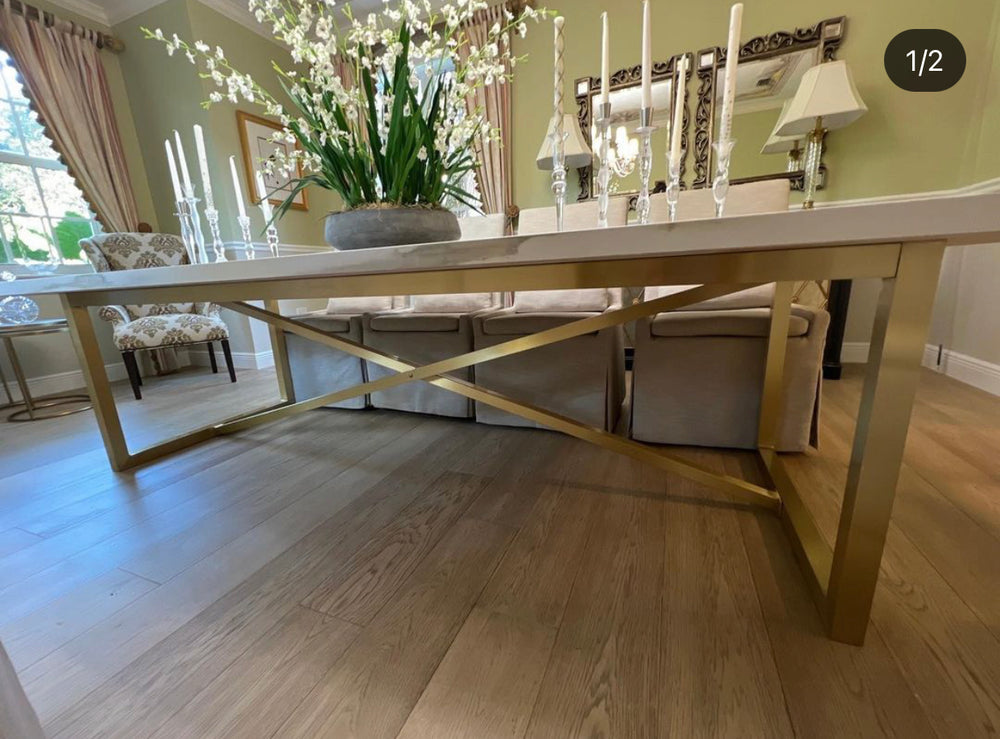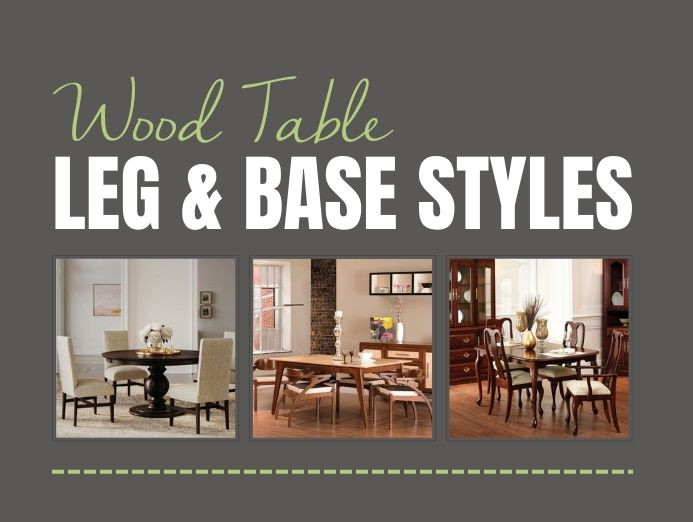Why Dining Room Table Legs Are Crucial for Your Table’s Stability
Why Dining Room Table Legs Are Crucial for Your Table’s Stability
Blog Article
From Typical to Modern: Discover the Ideal Dining-room Table Legs for Your Design
The option of eating room table legs plays a pivotal function in defining the general personality of your space, linking the gap between conventional workmanship and contemporary aesthetics. While classic designs such as cabriole and turned legs evoke a sense of ageless elegance, modern styles like barrette and geometric options offer a chance for striking aesthetic passion. Evaluating the best equilibrium in between these styles needs a nuanced understanding of your existing décor and personal taste. As you take into consideration these components, the concern continues to be: how can you perfectly integrate these varied leg styles to produce a harmonious dining experience?
Understanding Table Leg Styles
The selection of dining-room table leg styles can considerably influence both the visual appeals and functionality of the room. Each leg design contributes unique sensible functions and visual aspects, accommodating diverse layout preferences and use demands. Comprehending these designs is important for picking the appropriate dining table that lines up with your overall indoor style vision.
For instance, conical legs offer a tidy, traditional appearance that can improve a room's elegance, while pedestal bases supply security and take full advantage of legroom, making them optimal for smaller sized areas. Barrette legs, a trademark of mid-century modern-day layout, present an industrial flair, enabling a ventilated, open feel. Similarly, trestle legs stimulate rustic beauty, offering durable assistance and a sense of eternity.
Additionally, the choice of materials plays a significant role. Wood legs can bring warmth and structure, whereas metal choices frequently share a streamlined, modern vibe. Ultimately, comprehending table leg styles is necessary for developing a cohesive eating location that mirrors individual style while guaranteeing usefulness and convenience. By attentively considering these components, you can enhance both the aesthetic and functional appeal of your dining area.
Conventional Table Leg Options
When picking dining-room table legs, typical alternatives typically embody timeless beauty and craftsmanship. These designs mirror an abundant heritage and a commitment to quality, making them perfect for those that value traditional aesthetic appeals.
Among the most iconic standard leg designs is the cabriole leg, defined by its stylish curved shape. This design commonly includes attractive carvings and is most typically found in Queen Anne and Chippendale furnishings. Another prominent option is the transformed leg, which boasts a series of smooth, rounded shapes that offer a timeless look while keeping stability.
Moreover, the straight leg, while simple, provides a tough and unadorned structure that can blend flawlessly with a variety of tabletop designs. For those drawn to ornate describing, claw-and-ball feet legs evoke a sense of magnificence and can serve as a magnificent prime focus in any type of dining room.
Finally, stand bases, although not purely legs, supply an alternative traditional option that enables adequate legroom and can be wonderfully carved. Each of these typical leg styles adds to the general setting of a dining room, marrying function with aesthetic appeal.

Modern Table Leg Styles
Modern table leg layouts provide a diverse array of designs that emphasize ingenious products and clean lines. These styles often prioritize performance while serving as striking prime focus within a dining room. Minimal visual appeals are widespread, with legs crafted from materials such as steel, glass, and engineered timber, which add to a ventilated and modern feel.
One popular design is the hairpin leg, defined by its slim, conical framework that supplies security without frustrating the table top (dining have a peek here room table legs). This design is usually discovered in mid-century modern furniture and can easily complement various eating table forms. One more fad is using geometric forms, where legs might tackle angular or asymmetrical types, including visual passion and a touch of virtuosity

Blending Styles for Unique Areas
Frequently, house owners seek to develop one-of-a-kind eating rooms that show their personal style by blending numerous style components. This approach allows for the consolidation of diverse appearances, leading to a harmonious yet distinctive atmosphere. As an example, combining a rustic wooden table with sleek, modern steel legs can develop an attractive comparison that boosts the area's total appeal.
Additionally, integrating vintage table legs with modern table tops can evoke a feeling of background while keeping a contemporary perceptiveness. Such mixes not only showcase specific preference but likewise motivate creative thinking, enabling home owners to curate a room that feels both personal and inviting.
Color plays a crucial role in this blending process; selecting table legs that complement or comparison with the existing color pattern can enhance aesthetic passion. Whitewashed legs can soften the daring of a dark table surface, creating a balanced visual.
Tips for Choosing the Right Legs
Selecting the right table legs is necessary for attaining both capability and visual allure in your dining room. Begin by thinking about the general design of your click over here now area. Standard settings take advantage of legs that feature detailed carvings or transformed layouts, while contemporary areas may ask for streamlined, minimal styles.
Following, examine the elevation and security of the legs. dining room table legs. Typical eating tables range in between 28 to 30 inches in elevation, so ensure the legs complement this measurement for convenience. Additionally, robust materials, such as wood or steel, can enhance stability and long life
Examine the leg form also-- choices consist of directly, tapered, or pedestal styles. Straight legs use a classic appearance, while conical legs can add a touch of elegance. Pedestal bases provide adequate legroom and are perfect for smaller rooms.
Verdict
In summary, picking the ideal dining-room table legs requires mindful factor to consider of both standard and contemporary styles. Conventional options such as cabriole and transformed legs offer timeless elegance, while contemporary designs like barrette and geometric forms supply a contemporary touch. By integrating leg design, elevation, and product with the overall décor, a natural and welcoming environment can be achieved. Ultimately, the chosen table legs should show the desired visual, enhancing the eating experience within the Discover More Here area.
The selection of dining space table leg styles can significantly influence both the aesthetic appeals and functionality of the area. Eventually, recognizing table leg designs is crucial for creating a cohesive dining location that shows individual style while making certain functionality and comfort.One of the most iconic typical leg designs is the cabriole leg, identified by its stylish bent shape. Straight legs offer a timeless appearance, while tapered legs can add a touch of elegance.In recap, selecting the perfect dining room table legs requires mindful consideration of both conventional and contemporary designs.
Report this page